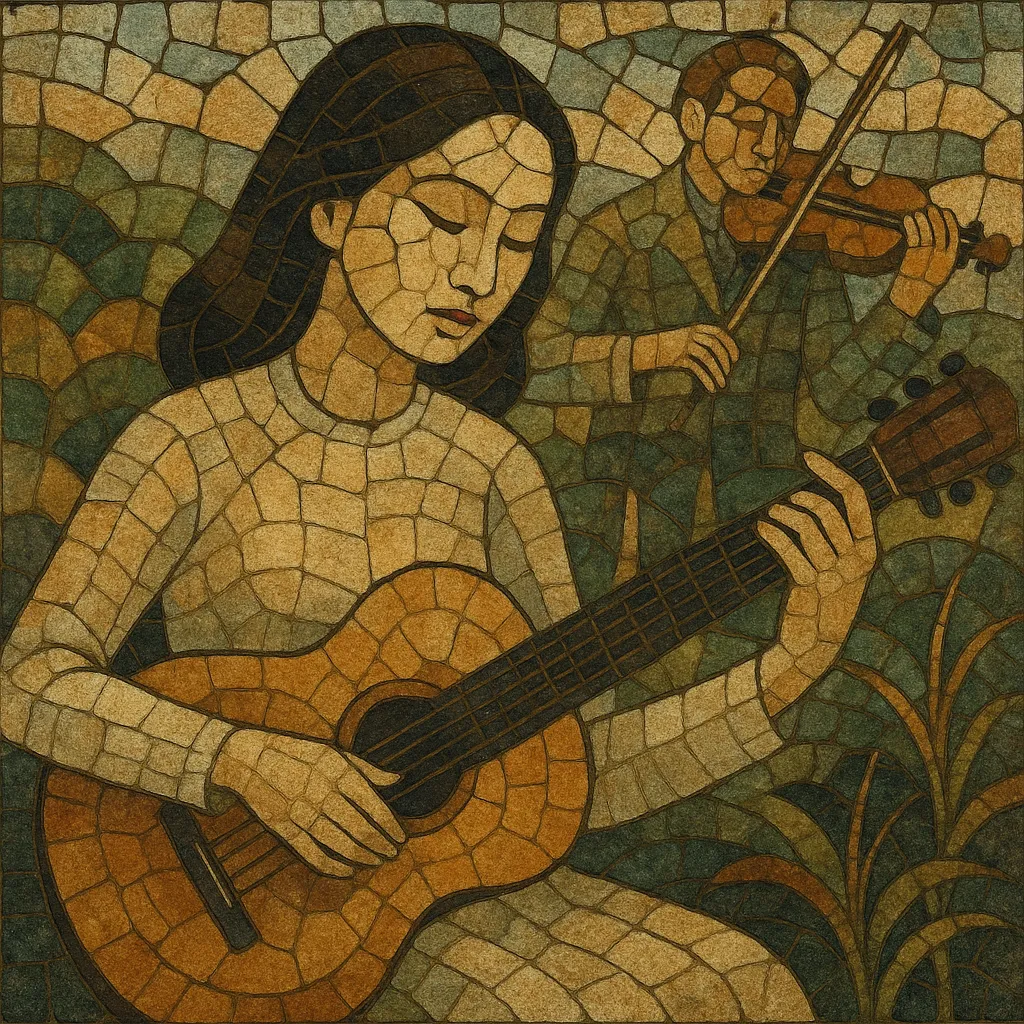Nhạc tiền chiến (pre-war Vietnamese popular music) refers to songs composed roughly from the late 1930s to 1945 in Vietnam, when Western tonal harmony and salon dance rhythms first intertwined with Vietnamese poetic sensibilities.
The style is marked by lyrical, cantabile melodies; diatonic major/minor harmony with touches of chromatic color; and graceful accompaniment patterns derived from waltz, tango, and habanera. Texts are refined and literary, often adapted from or inspired by poetry, and dwell on themes of love, longing, landscape, and homeland. Its overall sound is intimate and nostalgic, typically arranged for voice with piano or guitar, sometimes joined by violin or mandolin.
Although Westernized in harmony and form, nhạc tiền chiến preserves Vietnamese melodic turns and prosody, creating a unique bridge between local tradition and early 20th‑century European song and dance idioms.
Modern Vietnamese song (tân nhạc) emerged in urban centers such as Hanoi and Saigon during the late colonial period, when European salon culture, sheet music, and gramophone records spread new listening habits. Young composers began applying Western staff notation, tonal harmony, and dance rhythms to Vietnamese texts and melodic ideas. Early works by Dương Thiệu Tước, Nguyễn Văn Thương, and others signaled a turn from exclusively traditional genres toward a literary, cosmopolitan song style.
Between 1940 and the August Revolution of 1945, the repertoire flourished. Composers such as Văn Cao, Đặng Thế Phong, Lê Thương, Hoàng Quý, Doãn Mẫn, and Tô Vũ wrote songs that blended waltz, tango, and habanera rhythms with poetic Vietnamese lyricism. These pieces, published in songbooks and performed in salons and on radio, formed a core canon later labeled “nhạc tiền chiến.” Their hallmarks were elegant melody, refined harmony, and themes of love, nature, and homeland.
After 1945, shifting political and cultural circumstances recontextualized the repertoire. In the South (1954–1975) and later in the diaspora, pre‑war songs remained a touchstone of sophistication and nostalgia. From the late 1980s and 1990s onward, reissues and concerts in Vietnam helped revive interest among new audiences. Today, nhạc tiền chiến is regarded as a foundational chapter of modern Vietnamese songcraft, influencing nhạc vàng, Vietnamese bolero aesthetics, and the lyricism of contemporary Vietnamese pop and indie scenes.
Use a lead vocal supported by piano or classical guitar; add violin or mandolin for lyrical counter‑melodies. Keep textures transparent, with arpeggiated or Alberti‑style accompaniments that leave space for the voice.
Favor salon dance grooves: a lilting 3/4 waltz, a gentle 2/4 or 4/4 tango feel with habanera syncopation, or a slow walking pulse. Tempos tend to be moderate to slow to highlight the singer’s phrasing.
Write in diatonic major/minor with tasteful color tones (secondary dominants, borrowed iv/II). Common forms are strophic or verse‑refrain. Cadences should feel poised and lyrical, supporting long vocal lines rather than virtuosic modulation.
Craft singable, arching melodies that accommodate Vietnamese prosody and tonal accents. Allow subtle ornamental turns, stepwise movement, and controlled leaps that resolve gracefully.
Adopt refined, poetic language—often imagery of seasons, rivers, and distant landscapes—to evoke longing, love, and memory. Maintain an intimate, contemplative tone; avoid melodramatic extremes. The overall goal is elegance, nostalgia, and emotional clarity.


